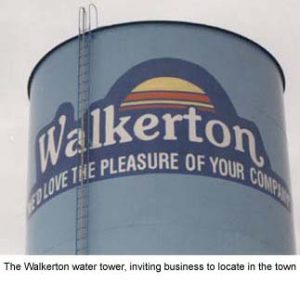I guess someone published this again, since the Walkerton outbreak of E. coli O157 which killed seven and sickened over 2,000 k in a town of 5,000 happened in May 2000.
I know it’s not the best writing, but I tried, and it was 20 years ago. I severed on an expert (I hate that word) committee and we wrote our report.
We live near the publicaly funded Princess Alexandria hospital in Brisbane.
A helicopter flies over our house a couple of times a day bringing some victim from the outback or the coast.
The state of Queensland is really, really big.
It reminds me of my Walkerton-resident friend and what he went through in the aftermath of the E. coli O157 outbreak in drinking water.dying being flown to the medical center in London, Ontario (that’s in Canada, like Walkerton).
I think of Jim and the victims every time a chopper goes past.
The E. coli O157:H7 waterborne outbreak in Walkerton, Ont., Canada, in May 2000, presented a clear and present danger of risk to citizens who consumed that water — at least in retrospect. More challenging though, is to know when a risk is severe enough to warrant extraordinary communications and how best to compel citizens to comply with health advisories.
Risk theory, involving assessment, management and communication, is important to underpin discussions of how regulators, industry and citizensincorporate and act on information about risks — such as the hazards posed by E. coli O157:H7 in drinking water. Today it is well accepted that the three components of risk analysis cannot be separated and are, in fact, integrated, and that communication involves the multi-directional flow of information.
Evidence from recent water-borne disease outbreaks illustrates the importance of timeliness in health related warnings.
Timeliness of message delivery is dependent on how quickly a problem is identified, and how the message is delivered. The public can passively receive information on health related risks from the media or the utility, or actively seek out information from information sources such as the Internet, telephone hotlines or library services (Casman et al., 2000).
In determining when to go public with health advisories, health authoritiesreport that every outbreak of food- or water-borne illness must be examine dusing factors such as severity, potential impact and incubation time of the suspect pathogen. The health risk outcome of microbiological hazards to the public should be assessed, discussed and quantified among workers from diverse disciplines, including health officials, veterinarians, food processing experts, microbiologists, medical doctors, risk analysis experts, and consumer behavior experts.
Once sufficient evidence exists to issue a public health advisory, risk messages must be designed that accurately describe the risk to individuals and provide concrete steps that individuals can take to reduce the chances of risk exposure.
Further, the number of suspected or confirmed illnesses related to the particular outbreak should be included as a matter of course in any public communications. And once health advisories have been created, a variety ofmessage delivery techniques need to be employed, again depending on the severity of the hazard, the size of the impacted population and local circumstances.
For a severe and immediate hazard such as E. coli O157:H7 in drinking water, a mixture of low-to-high technology message delivery mechanisms should be employed, including door-to-door, the buddy system, the use of existing community networks such as Neighbourhood Watch, emergency hubsite information centers and even mobile megaphones, complimented by more broader mechanisms such as local media, posting information on a website, automated telephone messages, broadcast faxes, and electronic mail distribution.
However, the key to using any of these technologies effectively is to plan ahead and be prepared. Effective planning will establish which techniques are best for the size of the community and the existing infrastucture. No one technology can reach all members of the target audience, therefore combining delivery methods is essential.
The current state of risk management and communication research suggests that those responsible with food and water safety risk management must be actively seen to be reducing, mitigating or minimizing a particular risk. The components for managing the stigma associated with any food safety issue seem to involve all of the following factors:
- effective and rapid surveillance systems;
- effective communication about the nature of risk;
- a credible, open and responsive regulatory system;
- demonstrable efforts to reduce levels of uncertainty and risk; and,
- evidence that actions match words.
This report has been concerned with the second point, the ability to effectively communicate about the nature of risk. E. coli O157:H7 is not regular E. coli. It is a highly virulent and dangerous pathogen that sickens tens of thousands annually in North America and kills hundreds. Each year since the 1993 Jack-in-the-Box outbreak has brought a high profile and deadly outbreak of E. coli O157:H7 from some corner of the developed world; outbreaks that receive significant media coverage and provide new insights; Australia in 1994 (involving the related E. coli O111); Scotland and Japan in 1996; a waterpark in Atlanta, Ga in 1998. While many Canadians may be unfamiliar with such outbreaks — media coverage in Canada is superficial at best, frequently focused on the hypothetical risks posed by various food-related technologies while ignoring the carnage associated with food and water-borne pathogens
Any local efforts must be supported by a national culture of awarenessregarding a risk such as E. coli O157:H7, which has been known to cause outbreaks and severe illness, and sometimes death, for almost 20 years. When compared to outbreaks and response in the U.S., it is observed that outbreaks, particularly of E. coli O157:H7 bring a sustained policy response from the highest levels of government, including the Office of the President. While there have been many private-sector initiatives in Canada to enhance the safety of the food supply, these efforts are rarely communicated or discussed by government, short of admonitions to “cook hamburger thoroughly.
If I dance, it’s poorly, but I loved it.
